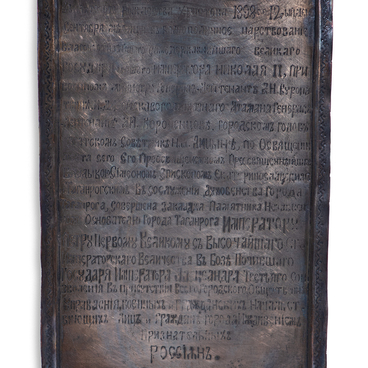Several centuries ago, candlesticks and candelabra could be found in every household. It is unknown who created the first candelabra or when it happened. The term itself is derived from two Latin words: “candela” (meaning “candle”) and “brum” (meaning “holder”).
The museum’s exhibition includes a bronze, seven-branched candelabrum that was produced in the Russian Empire in the first half of the 19th century. It has a distinctive design: a sturdy, ornately carved base and an elegant central piece that resembles a stylized garden.
The candle holder is decorated with flowers, a staircase, and an arch-shaped architectural detail decorated with “pearls.” The artist designed the upper part of the base to look like an Ionic capital. In the center of the composition, there is a figurine of a putto (from Latin “putus” meaning “child”). This is a little boy with crossed legs and a bowed head, holding a lamb in his arms. The folds in the boy’s cloak are all thoroughly detailed.
The depiction of naked or half-naked children goes back to the images of cupids in ancient classical art. In the 18th century, during the era of Rococo and Neoclassicism, when French style prevailed in European art, the Italian word “putto” gradually disappeared from the artistic vocabulary. Instead, French terms began to be used — “cupidon” (from Latin “cupido” meaning “desire”) and “amoretto” (from French “amourette” meaning “light, fleeting love”).
The item’s décor also includes elements of rocaille (from the French word meaning “loose stones”). The term refers to ornamentation featuring stylized shell-like motifs. This style was popular at the court of King Louis XV. Most often, rocaille was used in the decoration of park pavilions and grottoes. Its details imitated natural objects such as seashells, unusual plants, rocks, and rock fragments.
